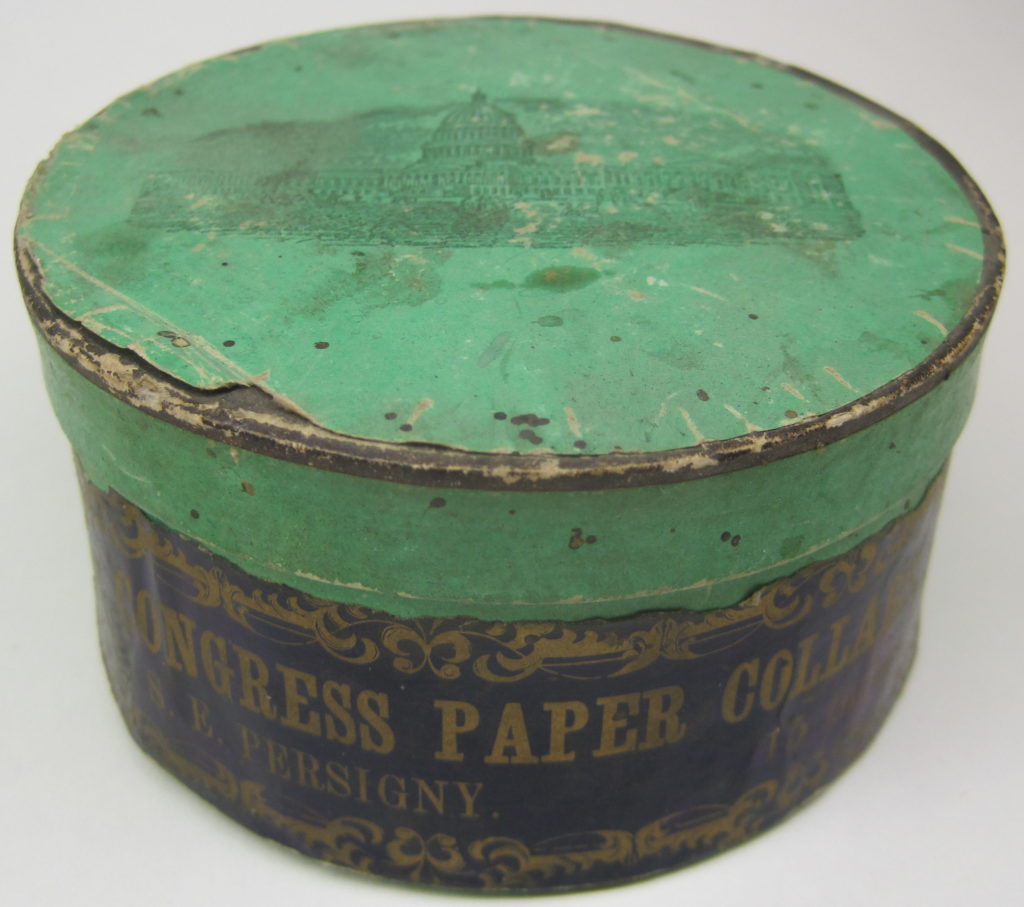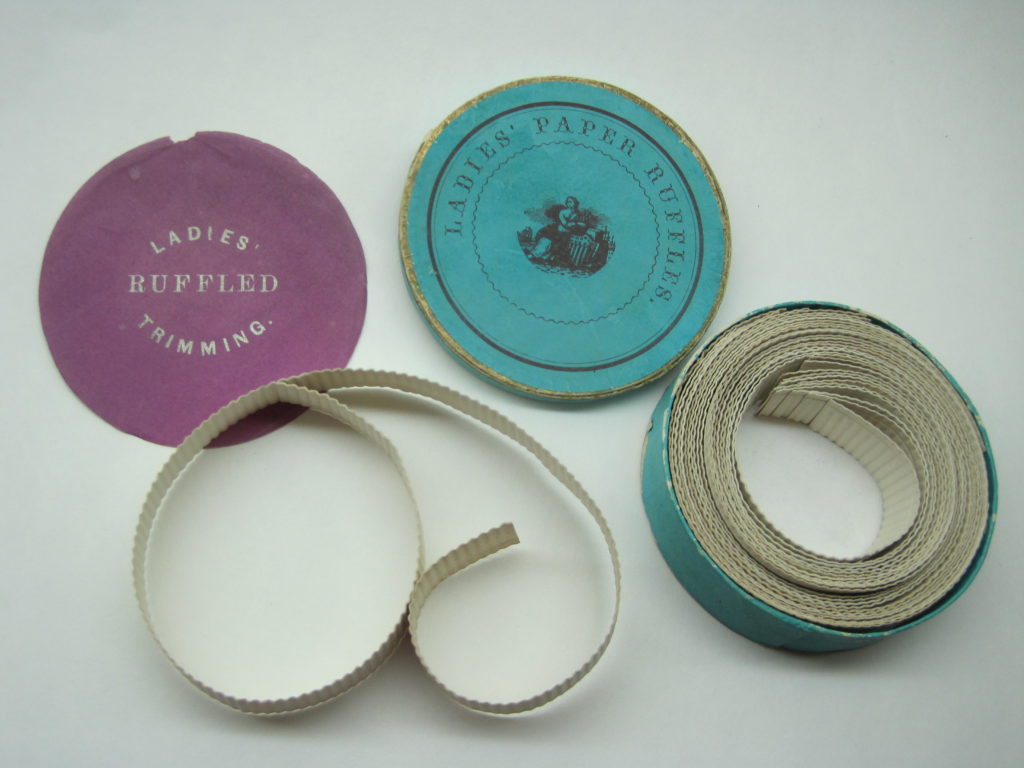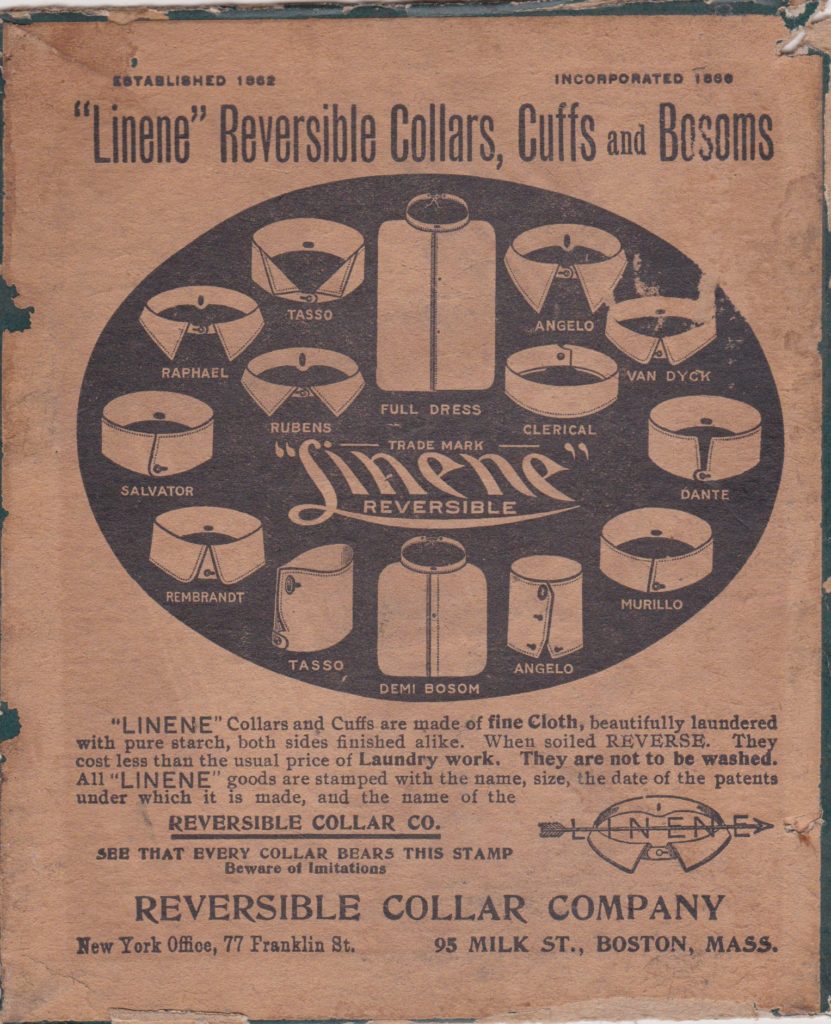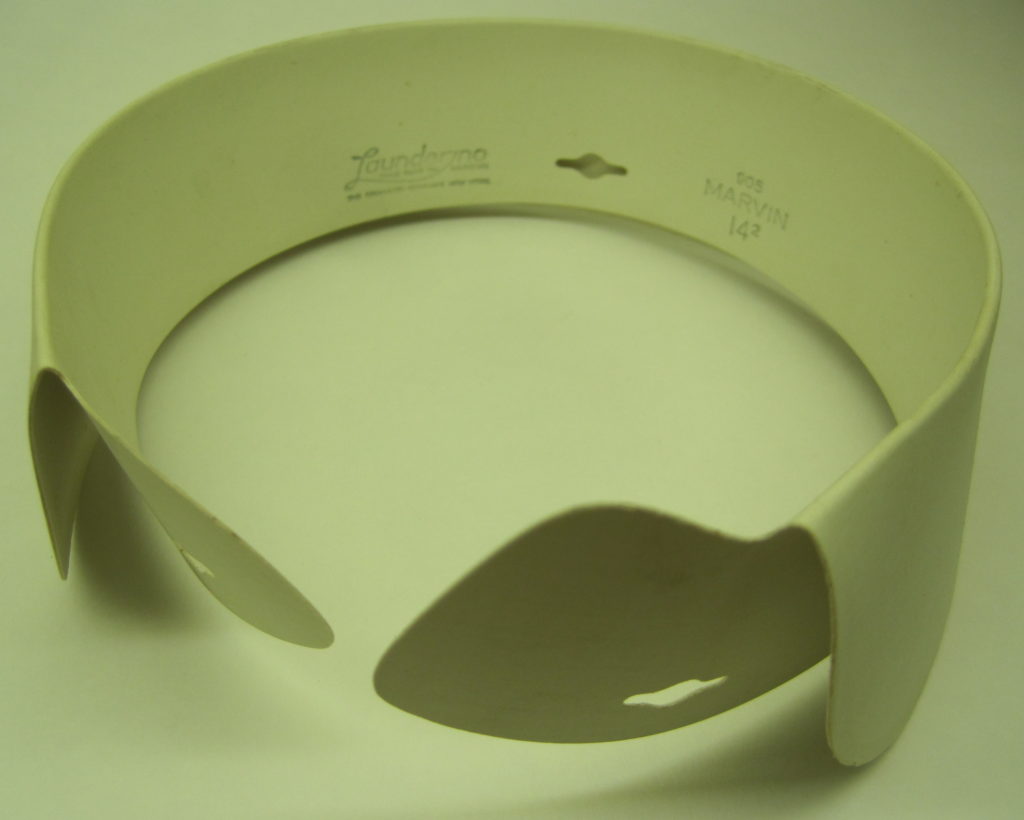Off the Cuff
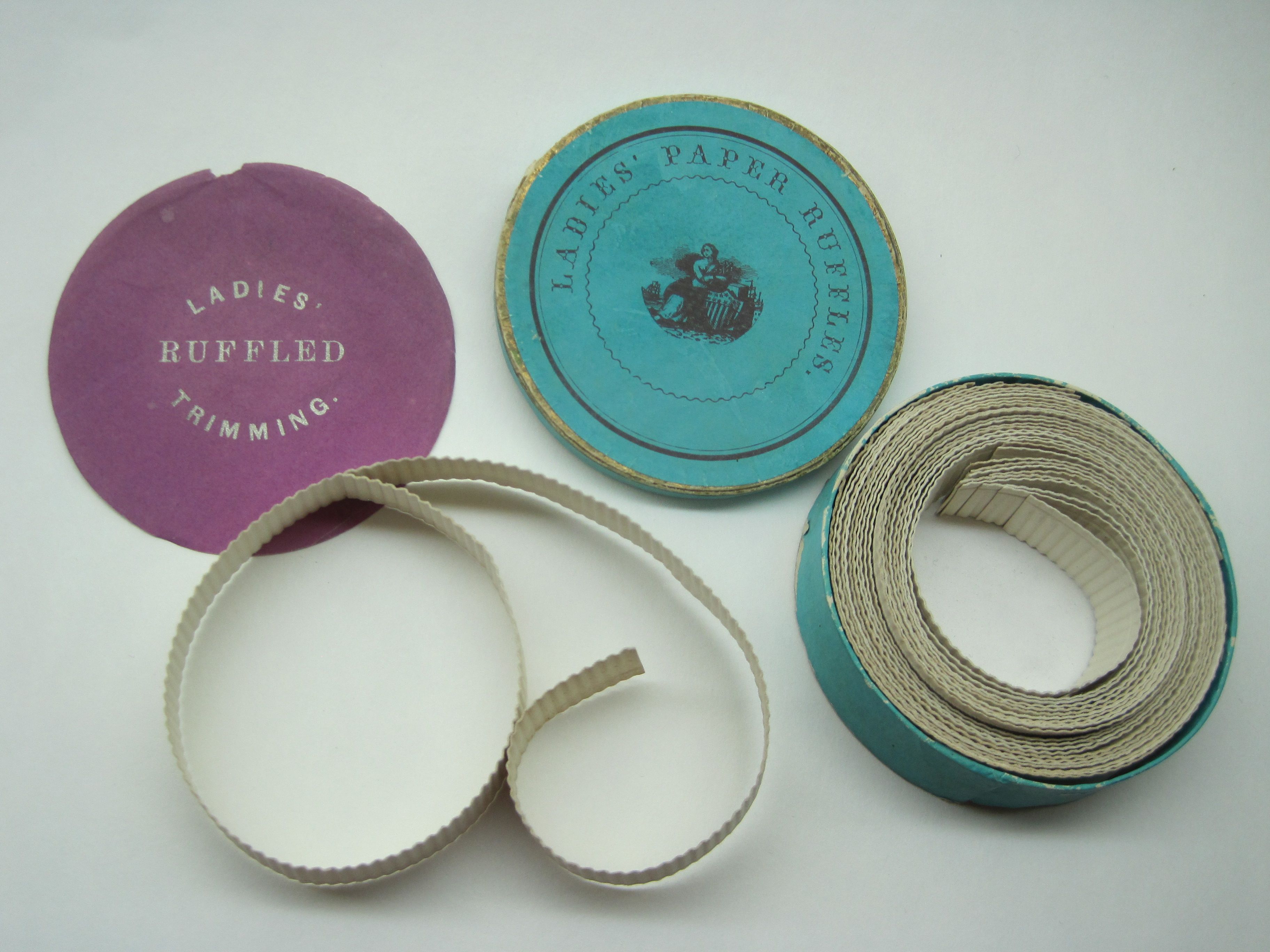
Did you know that the expression came from nineteenth-century politicians (and others) cribbing from notes written on their paper cuffs?
Apparently the urge to avoid washing the white collars and cuffs that were a hallmark of Middle Class employment or womanly gentility was strong enough to create a decades-long industry in substitutions for cloth.
Paper was the first choice – and the first paper collars appeared in the 1850s under the name “Persigny” for the French Minister of the Interior. Here a pasteboard box with a view of the Capitol in Washington on the lid held a dozen “Congress Paper Collars.”
A similar pasteboard box held a dozen crimped paper ruffles – each long enough to edge the neckline of a woman’s bodice or cut in half to edge cuffs. The patriotic emblem on the lid implies this appeared during the 1860s.
But treated paper mixed with cloth fibers was an even better idea – “Linene” was invented in Boston by George K. Snow in 1866, who packaged his collars and cuffs around the turn of the nineteenth-century in a box with this lid advertisement illustrating the different styles.
The actual collar, from the 1920s, is a 14.2 inch “Marvin” style, manufactured under the name “Launderno,” trademarked in 1917 for resin-impregnated linen that would never need laundering.
About the author . . .
Diane is partners in aGatherin’ – dealers in ephemera since 1979. She is the editor of publications for both the Ephemera and the Postal History Society. With partner Robert Dalton Harris she was awarded the Maurice Rickards Medal for excellence in the field of ephemera in 2008, and the Luff Award for Distinguished Philatelic Research in 2016. She has given presentations and workshops on Victorian dress and customs at Lake Mohonk Mountain House, including an annual workshop to create Victorian Christmas ornaments for their parlor tree.

